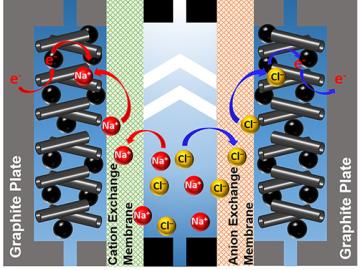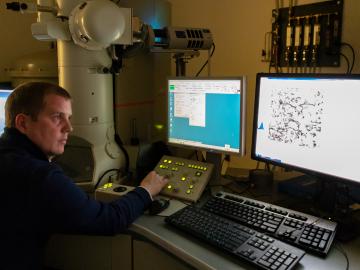
Filter News
Area of Research
- Advanced Manufacturing (5)
- Biological Systems (1)
- Biology and Environment (57)
- Building Technologies (1)
- Computational Biology (1)
- Computational Engineering (2)
- Computer Science (10)
- Energy Science (47)
- Fusion and Fission (2)
- Fusion Energy (4)
- Isotopes (12)
- Materials (39)
- Materials for Computing (8)
- Mathematics (1)
- National Security (4)
- Neutron Science (8)
- Nuclear Science and Technology (4)
- Quantum information Science (3)
- Supercomputing (24)
- Transportation Systems (1)
News Type
News Topics
- (-) Bioenergy (40)
- (-) Biomedical (24)
- (-) Computer Science (56)
- (-) Environment (88)
- (-) Isotopes (18)
- (-) Materials Science (49)
- (-) Mercury (7)
- (-) Microscopy (22)
- (-) Physics (20)
- (-) Space Exploration (10)
- 3-D Printing/Advanced Manufacturing (47)
- Advanced Reactors (15)
- Artificial Intelligence (25)
- Big Data (29)
- Biology (48)
- Biotechnology (11)
- Buildings (31)
- Chemical Sciences (22)
- Clean Water (21)
- Composites (14)
- Coronavirus (17)
- Critical Materials (14)
- Cybersecurity (9)
- Emergency (1)
- Energy Storage (45)
- Exascale Computing (4)
- Fossil Energy (1)
- Frontier (4)
- Fusion (18)
- Grid (29)
- High-Performance Computing (23)
- Hydropower (8)
- Irradiation (2)
- ITER (4)
- Machine Learning (24)
- Materials (45)
- Mathematics (8)
- Molten Salt (5)
- Nanotechnology (18)
- National Security (20)
- Neutron Science (37)
- Nuclear Energy (35)
- Partnerships (4)
- Polymers (15)
- Quantum Computing (6)
- Quantum Science (17)
- Security (8)
- Simulation (17)
- Statistics (1)
- Summit (10)
- Transportation (48)
Media Contacts

Sometimes solutions to the biggest problems can be found in the smallest details. The work of biochemist Alex Johs at Oak Ridge National Laboratory bears this out, as he focuses on understanding protein structures and molecular interactions to resolve complex global problems like the spread of mercury pollution in waterways and the food supply.

Oak Ridge National Laboratory physicists studying quantum sensing, which could impact a wide range of potential applications from airport security scanning to gravitational wave measurements, have outlined in ACS Photonics the dramatic advances in the field.

A study led by Oak Ridge National Laboratory explored the interface between the Department of Veterans Affairs’ healthcare data system and the data itself to detect the likelihood of errors and designed an auto-surveillance tool

Scientists have discovered a way to alter heat transport in thermoelectric materials, a finding that may ultimately improve energy efficiency as the materials

Using Summit, the world’s most powerful supercomputer housed at Oak Ridge National Laboratory, a team led by Argonne National Laboratory ran three of the largest cosmological simulations known to date.

In a step toward advancing small modular nuclear reactor designs, scientists at Oak Ridge National Laboratory have run reactor simulations on ORNL supercomputer Summit with greater-than-expected computational efficiency.

Oak Ridge National Laboratory is using artificial intelligence to analyze data from published medical studies associated with bullying to reveal the potential of broader impacts, such as mental illness or disease.

Scientists at Oak Ridge National Laboratory have developed a low-cost, printed, flexible sensor that can wrap around power cables to precisely monitor electrical loads from household appliances to support grid operations.

A team of scientists led by Oak Ridge National Laboratory used carbon nanotubes to improve a desalination process that attracts and removes ionic compounds such as salt from water using charged electrodes.

Kevin Field at the Department of Energy’s Oak Ridge National Laboratory synthesizes and scrutinizes materials for nuclear power systems that must perform safely and efficiently over decades of irradiation.


